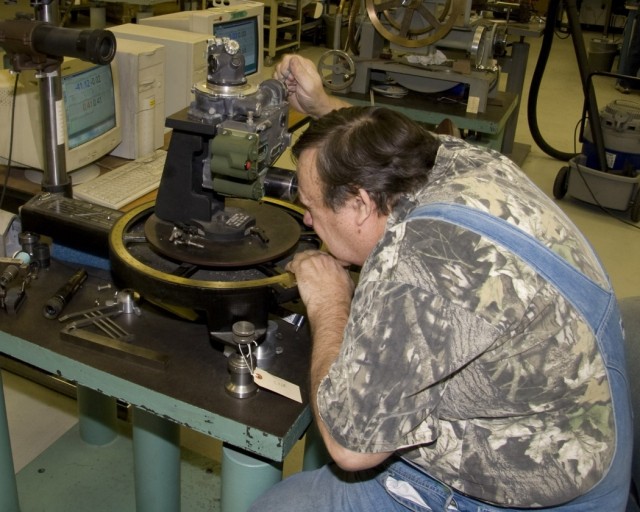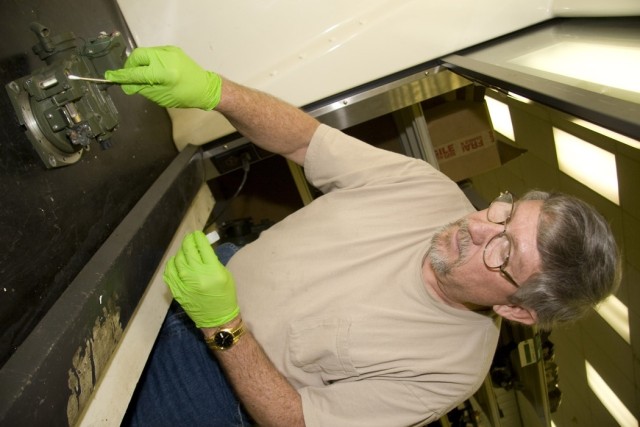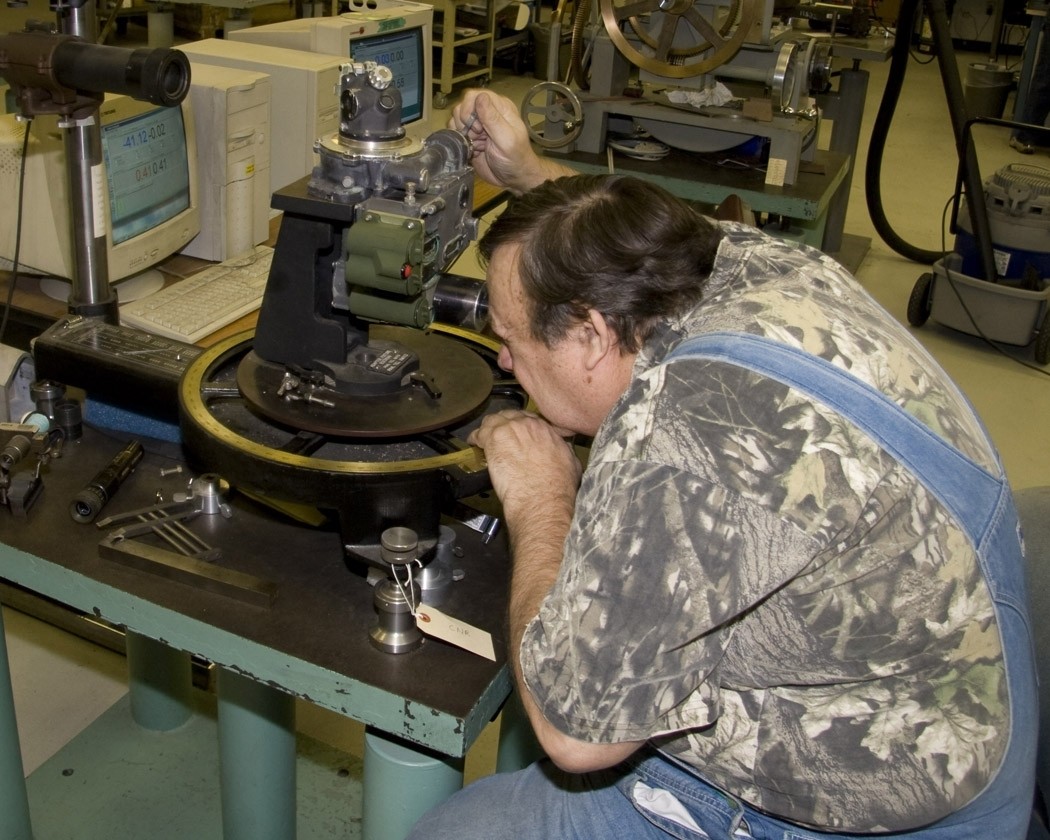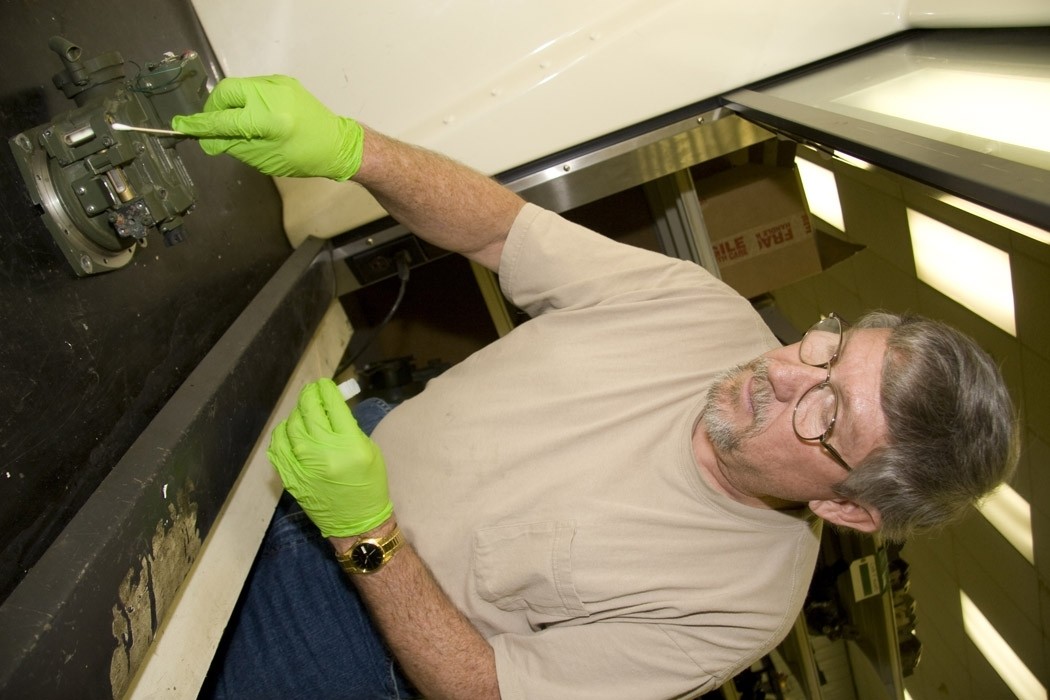Anniston Army Depot, Ala.--Six employees in the depot's optics and final repair branch are rarely seen working.
That's because they work with radioactive sources that must be kept in a locked room, away from co-workers and passersby.
These optical instrument repairers say they have the best job on depot, but it may be the tritium talking.
"We basically do the same things as our co-workers up front (not in the tritium room), but we're dealing with radioactive parts and they're not," said Rusty Watts, lead worker in the tritium room.
Tritium is a radioactive gas that, when placed in a tube with phosphorescent coating, can produce a light that glows in the dark. Tritium is found in some fire control devices to help light the sight's cross hairs when the warfighter is operating it at night.
Radioactive tubes can also be used in other parts of fire control devices, such as the counters, but not all instruments repaired in the tritium room contain this radioactive source.
The optics and final repair branch repairs the fire control instruments for all of the depot's towed artillery programs. In the tritium room, the sighting and aiming devices go through a total rebuild.
Currently, the repairers are rebuilding muzzle reference systems used as a collimator in gun sights for the M1 tank. These foot-long systems are taken off every M1 tank that comes into the gate and then brought into the tritium room where they go through a series of tests before they're repaired.
Safety practices are important to the tritium handlers, and they make sure all the instruments coming into the shop are checked for radioactive gas leaks before they're sent through the production line.
An electronic tritium detector helps find traces of any leaks, or "hot" spots, on the devices. And handlers have scintillation fluid they rub onto potentially leaking areas with a cotton swab, which is sent to the depot's safety office for testing. It takes only a few hours or less to receive the lab results, which tell workers whether or not they can safely move the instruments through the production line.
As a gas, tritium has a weak beta radiation but can contaminate easily, said Bob Curry, health physicist in the safety office.
"Even though the Army has had it's fair share of problems with tritium, the radioactive beta from the gas is weak, energy-wise, and travels a short distance when it's leaked," said Curry.
The tritium room works an average of 30 to 40 instruments each month, keeping all the processes, including paint, in-house before the finished product is taken to the final tank assembly area.
The depot has been working with tritium sources like these since the 1980s, and according to Watts, the government is trying to move away from using the radioactive gas in its weapons systems.
"It's a slow process," said Watts. "And for the systems we're working now, it will be hard because tritium, as a gas, doesn't ever completely go away or leave an instrument."
One solution the government has for ridding the fire control systems of tritium sources is the ERLS project, or the Elimination of Radioactive Light Sources.
According to Seiler Instrument, the maker of the ERLS, this project will replace tritium light sources with ultra-low power light emitting diode, or LED, technology.
Seiler has been manufacturing the ERLS for 10 years, said Bob Spillan, a sales manager for the company.
"The government came to us and said that tritium was causing a problem when the source broke, so we came up with something to take the place of tritium," said Spillan.
On its company website, Seiler cited benefits of this non-nuclear alternative to the tritium: an elimination of the threat of radiation to the Soldier and the civilian; enhanced maintenance and support through the replacement of modules; decreased government expenditure yield a cost savings for the U.S. Army estimated to be $71 million over 10 years; and the elimination of Nuclear Regulatory Commission surveillance, inspections and reporting requirements.




Social Sharing